Hydroponic systems are a type of gardening that doesn’t require soil. Instead, the plants are grown in a water and nutrient solution. Hydroponics can be done with different mediums, such as gravel, sand, or coco peat. There are several benefits to growing plants hydroponically, such as faster growth rates, fewer pests and diseases, and higher yields.
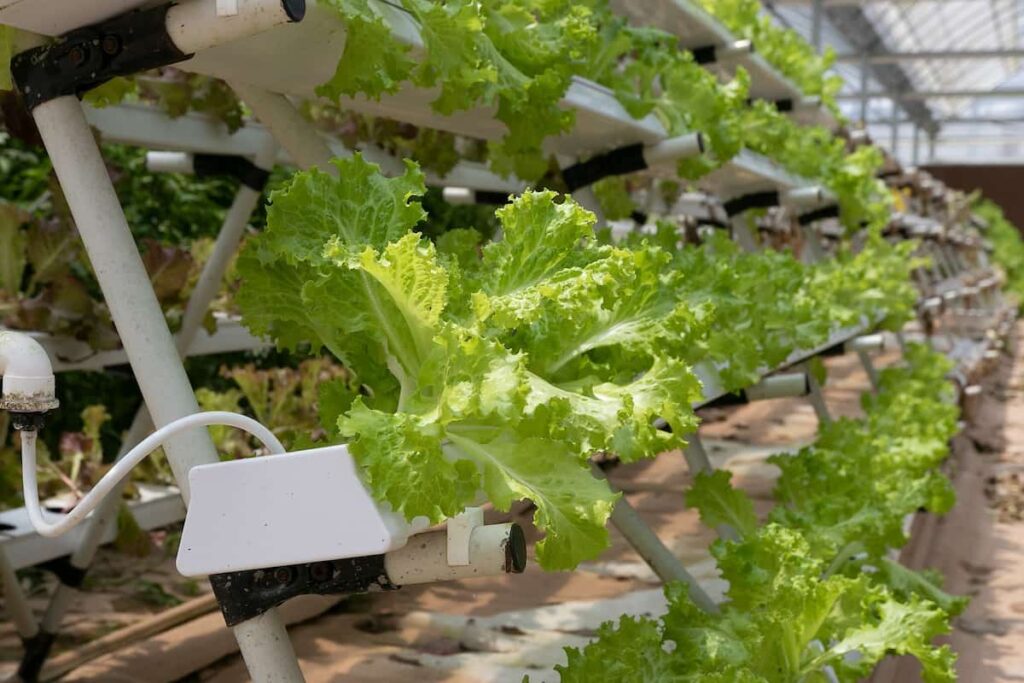
If you’re interested in starting your hydroponic farm in Australia, there are certain things you need to know first. This blog post will cover everything from the basics of hydroponics to setting up your farm. We will also provide tips on getting started and what to consider before you begin.
How to start hydroponic farming in Australia
What is hydroponic farming?
Hydroponic farming is a type of method where plants are grown in a soilless solution, typically with water and nutrients. This farming method can produce various crops, including fruits, vegetables, and herbs. There are many benefits to hydroponic farming, including the fact that it is possible to control the environment in which the plants are grown. This means that farmers can optimize conditions for plant growth, resulting in higher yields.
Additionally, hydroponic systems use less water than traditional methods of agriculture, making them more efficient and sustainable. If you’re interested in starting your hydroponic farm in Australia, there are a few things you’ll need to get started:
- You’ll need to choose a location with plenty of sunlight and access to water.
- You’ll need to purchase or build a hydroponic system.
- You’ll need to buy or grow your plants.
You can successfully start your own hydroponic farm with some planning and effort!
In case you missed it: Hydroponic Farming at Home: How to Start, Kit, Cost, Best Plants for Home Hydroponics

Scope of hydroponic farming in Australia
Hydroponic farming is an efficient and sustainable way of producing fruits, vegetables, and herbs. It can be done on a small or large scale, making it an excellent option for farmers in Australia.
There are many benefits to hydroponic farming, including:
- Increased yields – when done correctly, hydroponic farms can produce up to 10 times more than traditional soil-based farms.
- Less water usage – hydroponic systems use less water than traditional methods, making them more drought-tolerant.
- Pest and disease control – because plants are grown in a controlled environment, they are less susceptible to pests and diseases.
- Year-round production – with the proper setup, hydroponic farms can produce crops all year round.
If you’re thinking about starting a hydroponic farm in Australia, there are a few things to keep in mind:
- You’ll need to obtain the proper licenses and permits from your state or territory government.
- You’ll need to choose the right location for your farm. Hydroponic farms can be located indoors or outdoors, but it’s essential to ensure that the site has good airflow and access to sunlight (if you’re growing outdoors).
- You’ll need to choose the right type of system for your needs.
Many types of hydroponic systems are available on the market, so it’s important to do your research before choosing one.
Types of hydroponic systems
There are several types of hydroponic systems, each with advantages and disadvantages. The most common types are:
- Ebb and Flow (Flood and Drain)
- Deep Water Culture (DWC)
- Wick
- Nutrient Film Technique (NFT)
- Aeroponics
Ebb and Flow hydroponic system uses a timer to flood the roots with nutrient-rich water and drains it back out. This allows the roots to get oxygenated and the nutrients they need. The most significant advantage of this system is that it is relatively inexpensive to set up. However, one downside is that if the timer goes off for too long, the roots can become waterlogged and start to rot.
In case you missed it: Farming Business Plan PDF: for Poultry, Livestock, Agriculture, Horticulture, Greenhouse, and Hydroponic
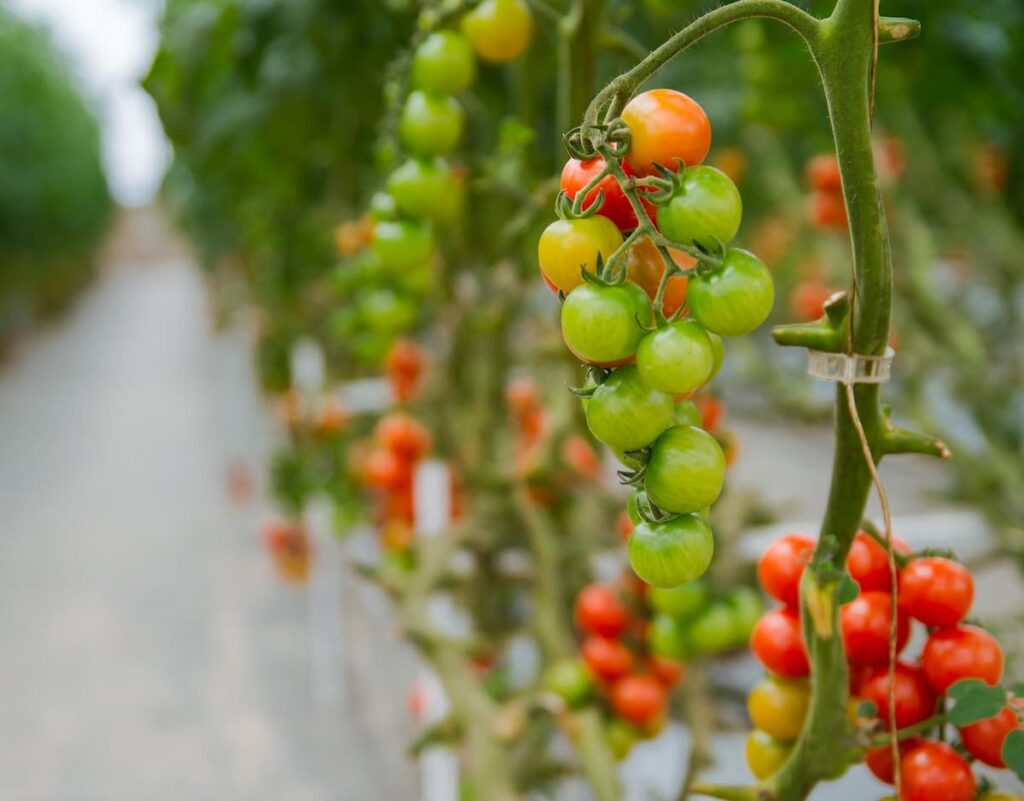
Deep Water Culture is a hydroponic system where the roots are constantly submerged in nutrient-rich water. An air pump oxygenates the water so the roots can breathe. This system is very efficient at delivering nutrients to the plants, but it can be expensive to set up since it requires an air pump and some reservoir for holding the water.
Wick systems are one of the simplest types of hydroponic systems, and they use a wick to deliver nutrients from a reservoir to the plant roots. The great advantage of this system is that it is low maintenance.
Benefits of hydroponic farming
Hydroponic farming has several benefits over traditional farming methods. The most obvious benefit is that it requires less water than traditional farming. Hydroponic systems can be designed to use as little as 2% of the water used in traditional agriculture. Another key benefit of hydroponic farming is that it can be done indoors, meaning that farmers are not at the mercy of the weather.
This means crops can be grown all year round, whether it is raining or sunny outside. Finally, hydroponic systems can be highly efficient, using less land than traditional agriculture. This makes them perfect for urban areas where space is limited.
6 requirements for hydroponic farming
- An adequate water supply is the most important requirement for hydroponic farming. The plants need a continuous water supply, and the roots must be constantly moist.
- A nutrient solution – Plants need a nutrient solution to give them the nutrients they need to grow. This can be purchased from a gardening store or online.
- A growing medium – The plants need a growing medium to support their roots. Commonly used media include gravel, sand, perlite, or coco peat.
- Aeration system – Hydroponic systems need to be well-aerated to ensure that the roots have access to oxygen. This can be achieved with an air pump and an air stone.
- A lighting system – Plants need light to photosynthesize and grow. For best results, use fluorescent, or LED Grow lights.
- An automated system – To make things easier, many hydroponic farmers choose to use an automated system that takes care of the watering and nutrient solution for them.
In case you missed it: Vertical Hydroponic Farming: A Growing Trend In Urban Agriculture
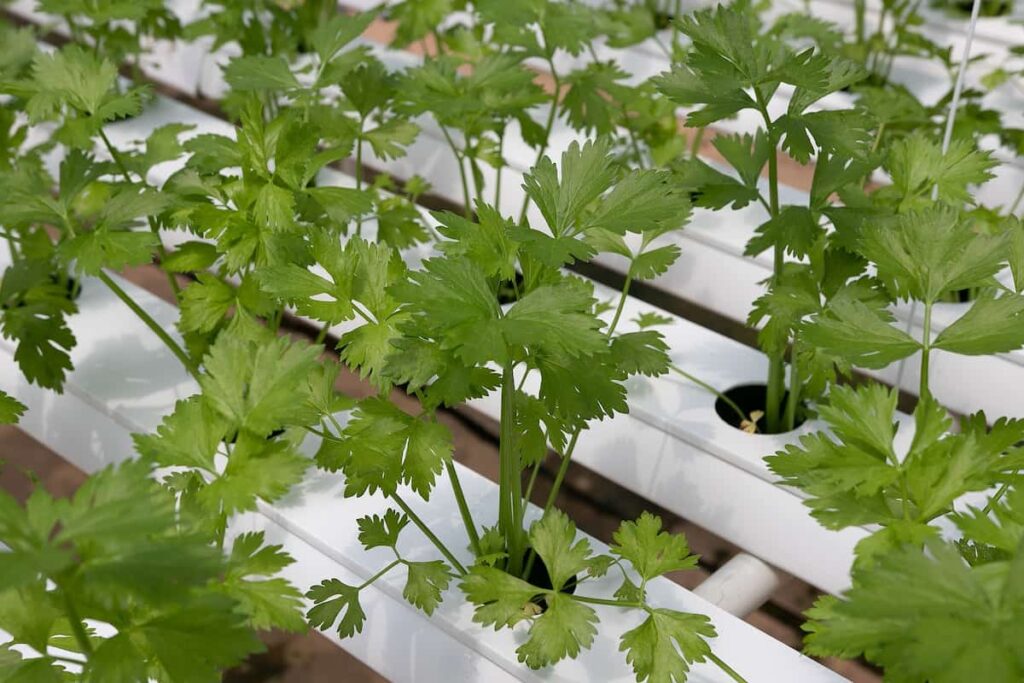
Best crops for hydroponic farming
Many different types of crops can be grown using hydroponic farming methods. Some of the most popular and easy-to-grow crops include:
| Lettuce | Kale |
| Coriander | Broccoli |
| Amaranth | Tomatoes |
| Spinach | Fodder crops |
| Bell Peppers | Cucumbers |
| Herbs | Strawberries |
How to set up a hydroponic farm in Australia?
Hydroponic farming is a type of system where plants are grown without soil, using mineral nutrient solutions in water. It is considered a more efficient and sustainable way of growing crops, using less water and land than traditional farming methods. If you’re interested in setting up a hydroponic farm in Australia, there are certain things you need to know. First, you’ll need to choose the right location. Hydroponic farms can be set up indoors or outdoors, but it’s important to ensure that your chosen site has enough sunlight and ventilation.
Next, you’ll need to purchase the necessary equipment. Many types of hydroponic systems are available on the market, so it is very important to do your research before making a purchase related to hydroponics. Once you have the equipment, you’ll need to set it up according to the instructions provided.
Finally, you’ll need to add plants to your system. You can grow almost any plant hydroponically, but some plants are better suited for this cultivation method than others. Once your plants are in place, you’ll need to monitor them closely to ensure they’re getting the nutrients they need and that the environment is suitable for their growth.
What materials do you need to build a hydroponics system?
- A container to hold your plants and their roots. This can be anything from a plastic bucket to a fish tank.
- Grow lights to give your plants the light they need to grow.
- A water pump to circulate the nutrient-rich water through the system.
- An air pump to supply oxygen to the roots of your plants.
- Growing medium, such as gravel or clay pellets, for your plants to grow.
- Nutrient solution to feed your plants.
In case you missed it: Hydroponic Growing System and Gardening
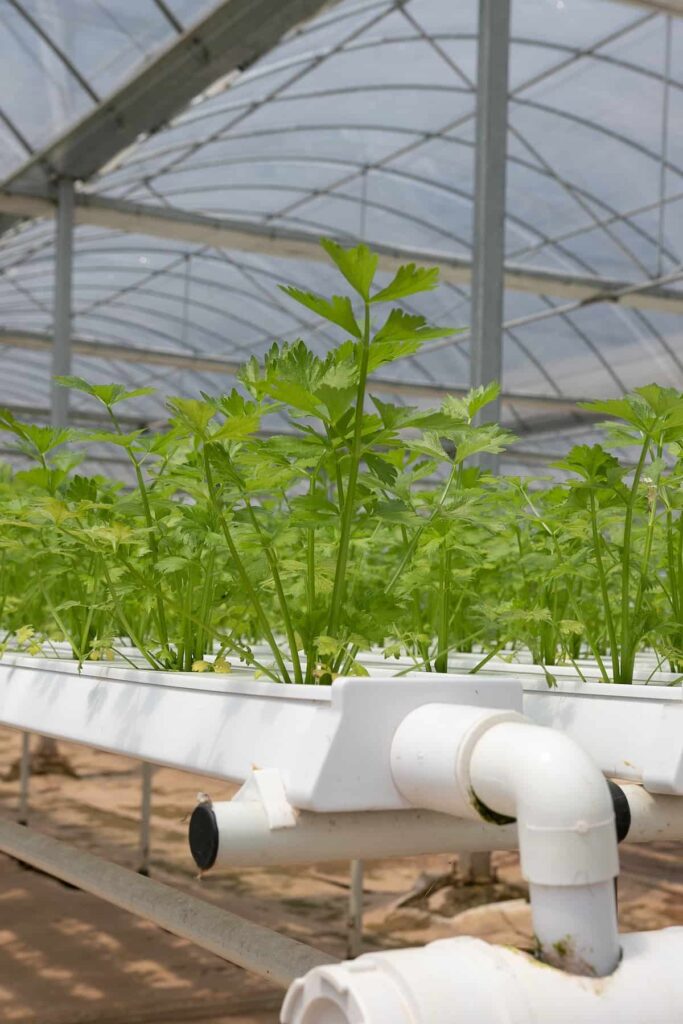
Cost to start a hydroponic farm in Australia?
The cost of starting a hydroponic farm in Australia can vary depending on the size and type of operation. For a small-scale farm, the initial investment may be around $5,000. For a larger commercial operation, the start-up costs could be as high as $500,000. The biggest expense for most farmers will be setting up the hydroponic system itself. The price of a hydroponic system can range from $1,000 to $50,000, depending on the size of the hydroponic system and complexity of the setup. Other significant expenses include:
- The cost of land or leasing space for the farm
- Construction costs for any necessary greenhouses or other structures
- The cost of pumps, irrigation systems, and other equipment
- The cost of planting materials such as seeds or seedlings
- Labor costs for hiring staff to help run the farm
Three main disadvantages of hydroponic farming
- Hydroponic farming can be expensive to set up.
- Hydroponic farming requires careful management and regular maintenance.
- Hydroponic farms can be susceptible to problems with pests and diseases.
How much land is required for hydroponics?
A hydroponic farm requires significantly less land than a traditional farm. You can even set up a small hydroponic farm in your backyard. Of course, the amount of land you’ll need will depend on the size and scale of your operation. But overall, hydroponics is a much more efficient use of space than traditional farming.
Why does the pH need to be around 6 for hydroponics?
The pH of a hydroponic solution needs to be around 6 for the following reasons:
- It is the ideal pH for most plants
- It allows for optimal nutrient uptake by plants
- It prevents the growth of harmful bacteria and fungi
If the pH of a hydroponic solution is too high or too low, it can lead to problems such as poor plant growth, nutrient deficiencies, and an increased risk of disease.
In case you missed it: Factors Affect Seed Germination: Germination Stages: Process, Types, Tips for Successful Seed Germination
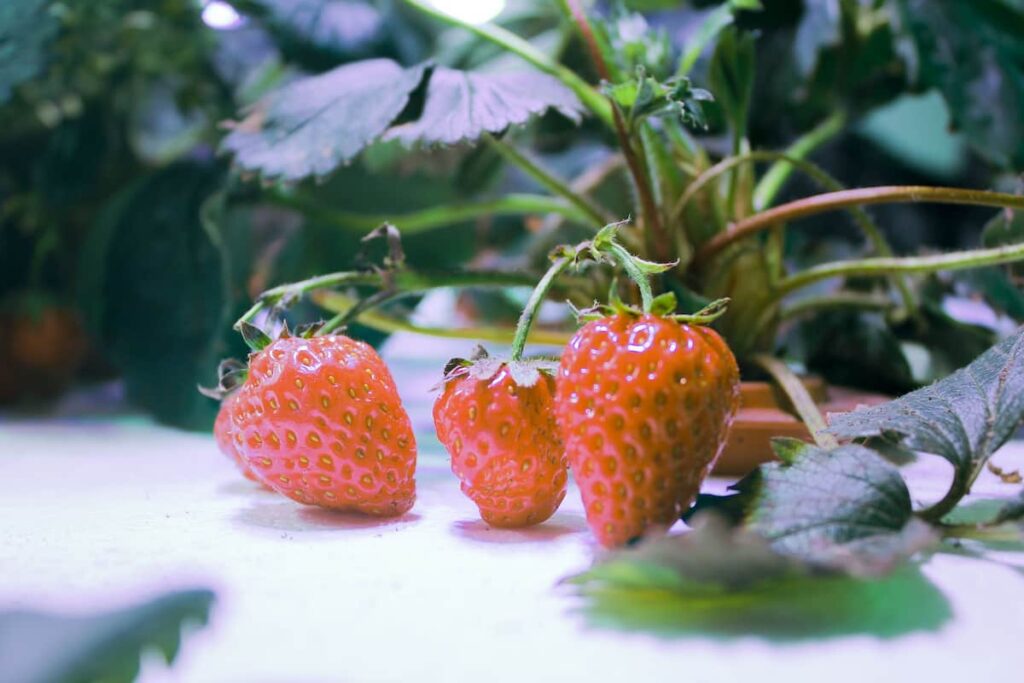
Cheapest way to start hydroponics in Australia
There are certain ways that you can start hydroponics on a budget in Australia. One way is to purchase a kit that includes everything you need to get started. Another way is to build your own system using recycled materials. You can also save money by using a simple hydroponics setup instead of a more complex one. Here are some tips for starting hydroponics on a budget in Australia:
Purchase a kit
There are many hydroponics kits available for purchase online or at your local garden center. These kits typically include everything you need to get started, including the growing medium, nutrient solution, and pump.
Build your own system
You can save money by building your own hydroponics system using recycled materials. For example, you can use plastic bottles or buckets as your growing containers.
Use a simple setup
A simple hydroponics setup is less expensive than a more complex one. For example, you can use a wick system, which is the cheapest type of hydroponics system.
Save on nutrients
You can save money on nutrients by using compost or manure instead of commercial fertilizers. You can also make your own nutrient solution using recipes that are available online.
Use LED lighting
LED lighting is more energy-efficient than traditional grow lights, which will help you save money on your electric bill.
Conclusion
If you’re thinking about starting a hydroponic farm in Australia, there are a few things you need to know:
- Make sure you have the right equipment and supplies for your hydroponics.
- You’ll need to find a suitable location for your farm.
- You’ll need to get the proper licenses and permits from the government.
With some planning and preparation, you can be well on your way to becoming a successful hydroponic farmer in Australia.
- Crops Grown in Summer Season: Best Choices for Summer Gardening
- Organic Pest Control for Tomato Farming
- How to Maximize Sheep Farming Profit
- Broccoli Varieties: Choosing the Right Cultivars for Your Farm
- How to Raise Pigs in Your Own Backyard: A Comprehensive Guide
- Budget Friendly Sheep Shed Ideas: Cheap and Low-Cost Tips
- How Much Do Cattle Farmers Make: Revenue Streams in Cattle Farming
- Management Pests and Diseases in Your Cotton Field
- Sheep Farming Business Plan for Beginners
- Aquaponic Farming at Home: A Step-By-Step Guide
- Profitable Village Farming Business Ideas in 2024
- High-Yield Aquaculture: Fast-Growing Fish for Farming
- Effective Fish Pond Construction Techniques for Beginners
- Irrigation and Water Management in Pineapple Farming
- Blossom to Harvest: Mastering Flowering and Pollination in Papaya Farming
- Pig Fattening Essentials: From Selection to Sale for Beginners
- Raising Wagyu Cattle: A Complete Guide for Premium Beef Production
- Soil Types and Their Water Holding Capacity
- Optimizing Irrigation Schedules for Coconut Groves for Enhanced Yield
- Espresso Your Garden: Coffee Grounds for Healthier Acid-Loving Plants
- The Best Soil Mix for Snake Plants: How to Mix Your Own Snake Plant Soil
- Green Thumb Success: Expert Tips for Cultivating Greenhouse Beans All Year Round
- Bloom All Year Round: The Ultimate Guide to Indoor Hyacinth Care
- Eco-Friendly Gardening: How to Make Liquid Fertilizer from Kitchen Waste
- Ultimate Guide to Grow Anise in Pots: Explore Seed Propagation to Harvesting
- Guide to Raising Chester White Pigs: Discover Breed Facts to Growth Management
- Mastering the Elegance: The Ultimate Guide to Weeping Cherry Tree Care, Planting, and Maintenance
- Ultimate Guide to Planting Garlic in Grow Bags: Growing Strategies for Beginners
- How to Fix Spider Plant Leaf-Related Problems: Natural and Organic Remedies
- 10 Reasons Why Your Tulsi Plant is Shedding Leaves: Home Remedies and Solutions
- Optimizing Growth and Yield: The Advantages of Palm Bunch Ash Fertilizer
- Utilizing Neem Oil Extract as a Natural Pesticide for Hydrangea
- From Soil to Harvest: Various Ways in Which Farmers Can Use AI Tools
- Steps to Encourage and Induce Citrus Flowers: A Comprehensive Guide
- How to Fix Snake Plant Leaf-Related Issues: Natural and Organic Remedies
- Transform Your Garden into a Fragrant Oasis with Raat Ki Rani (Night Blooming Jasmine)
